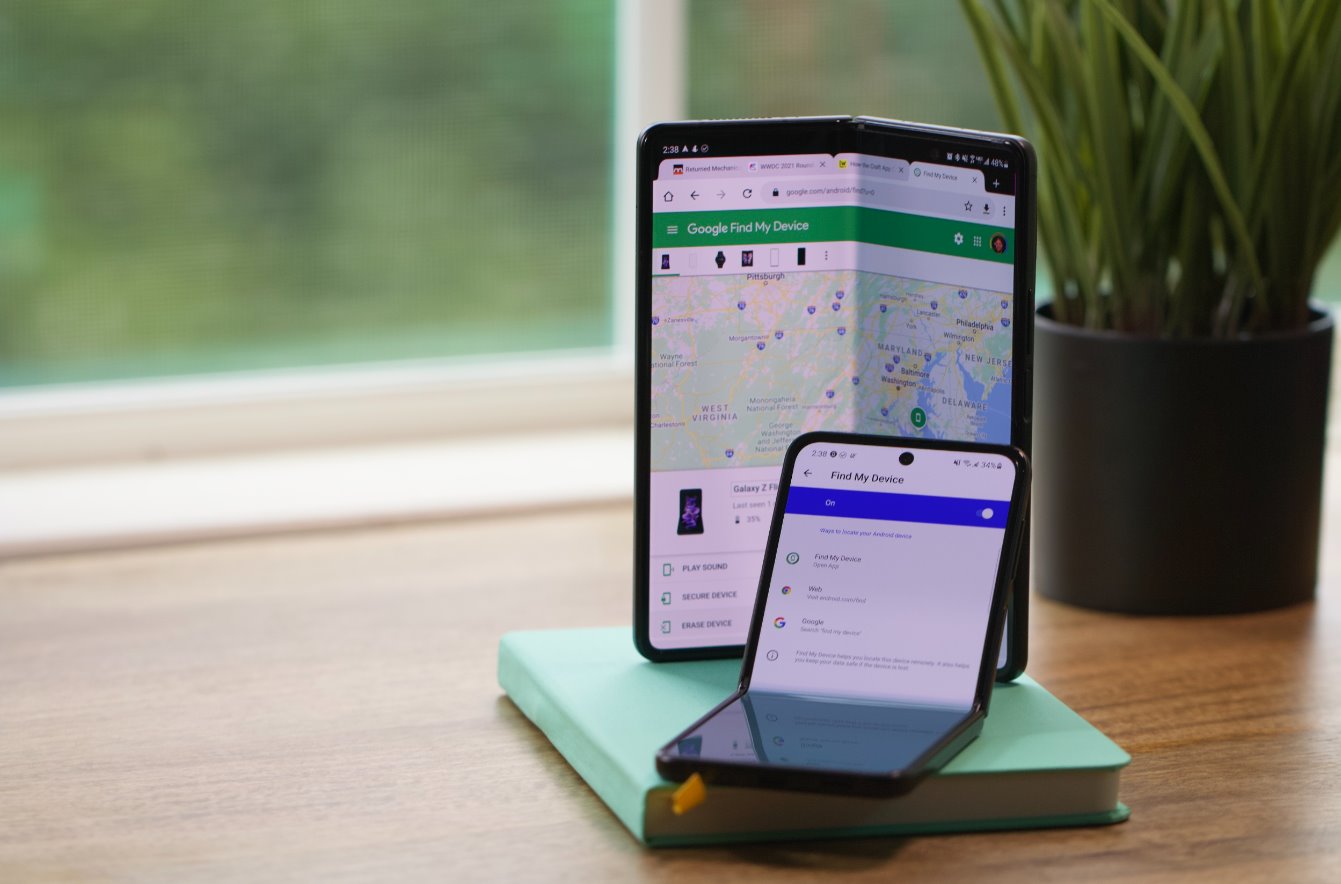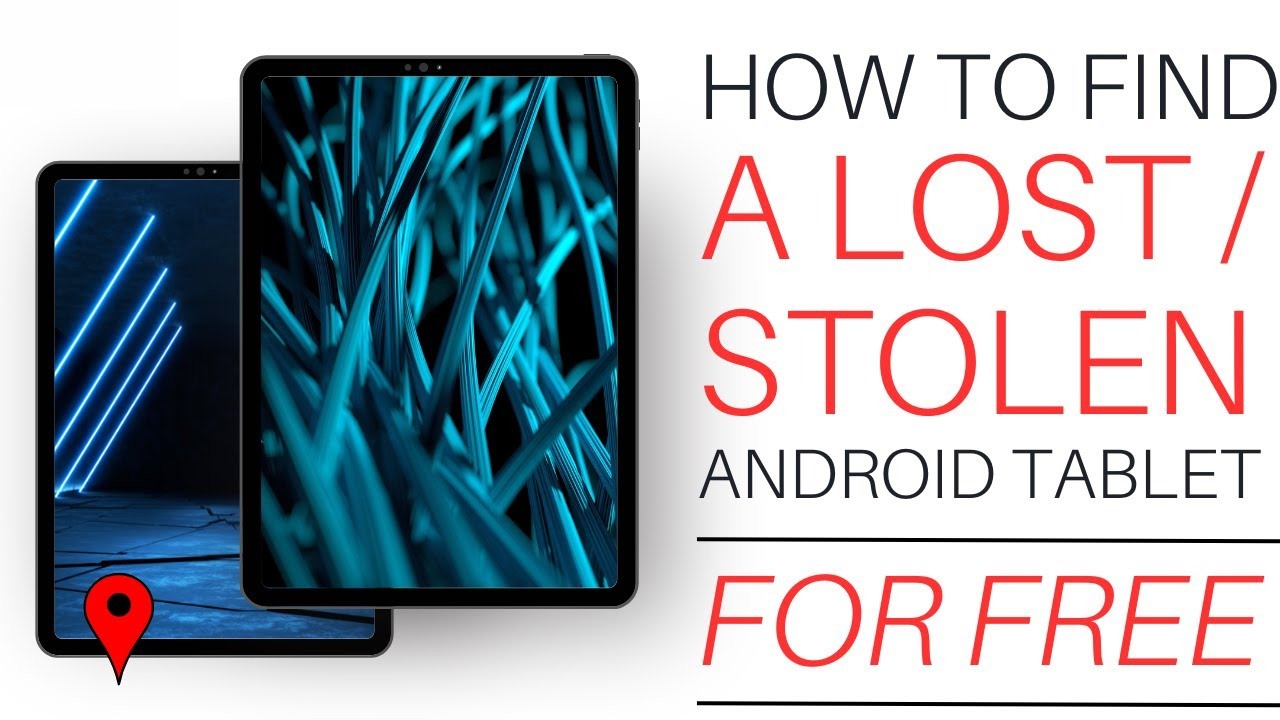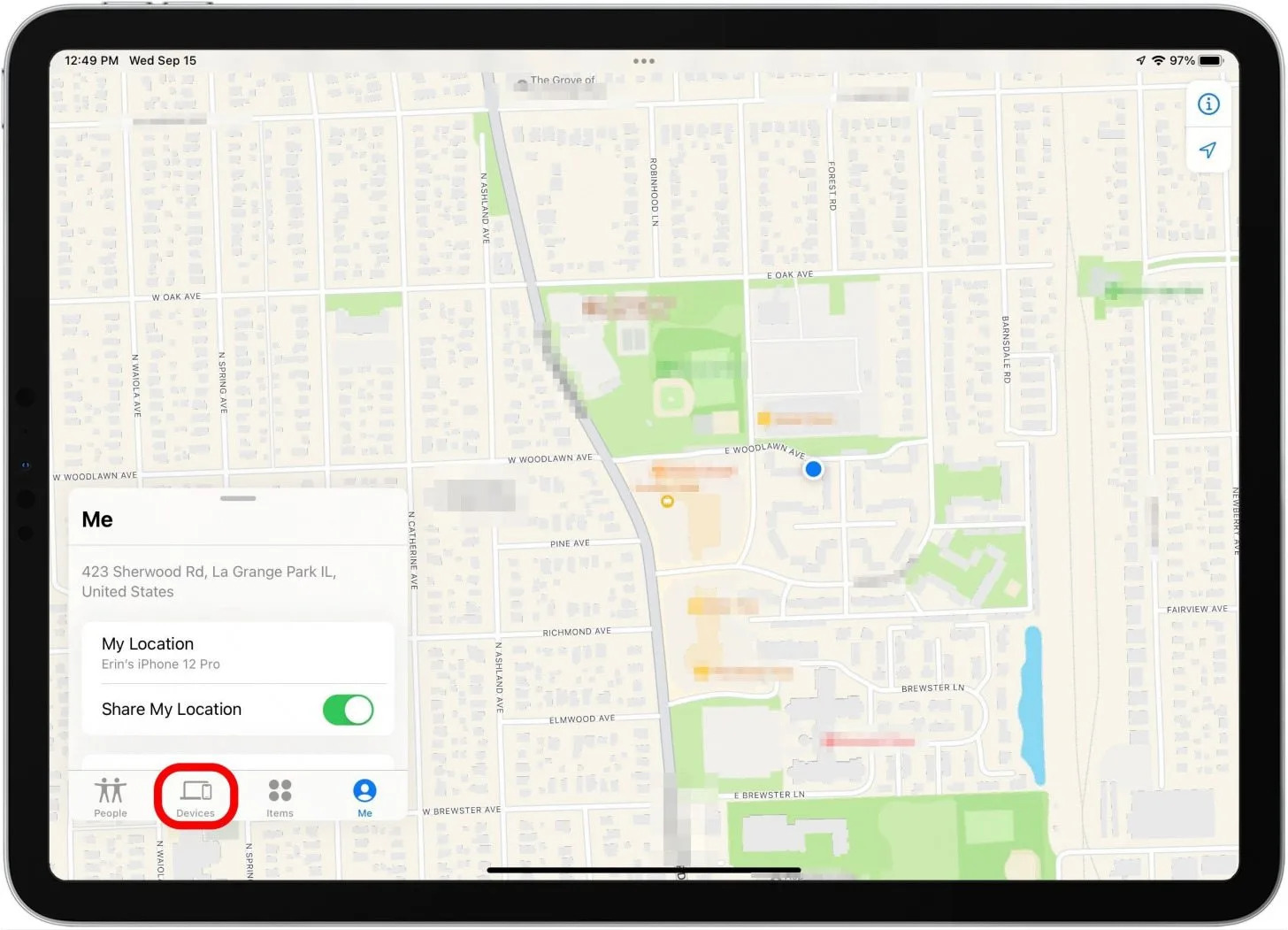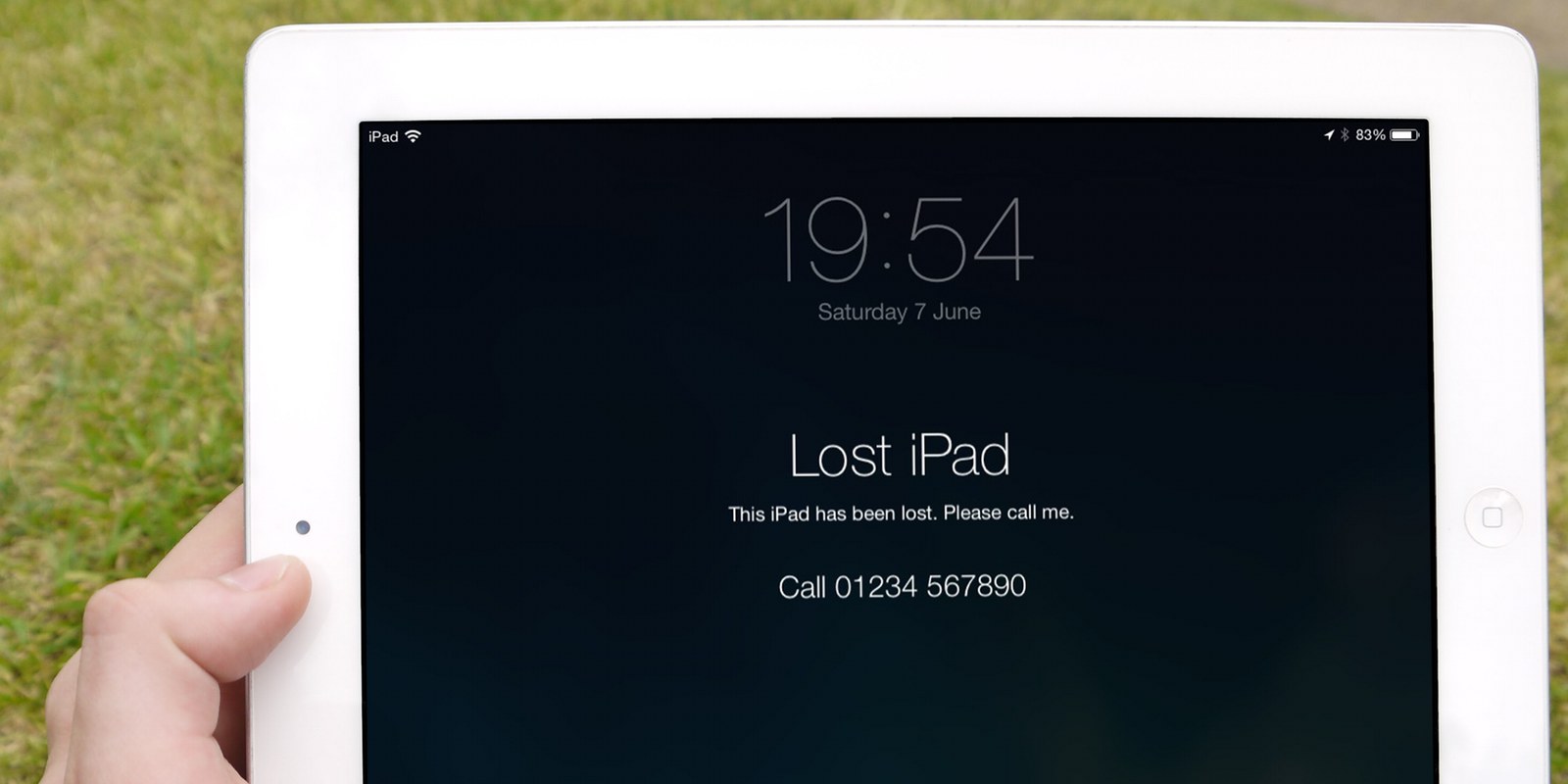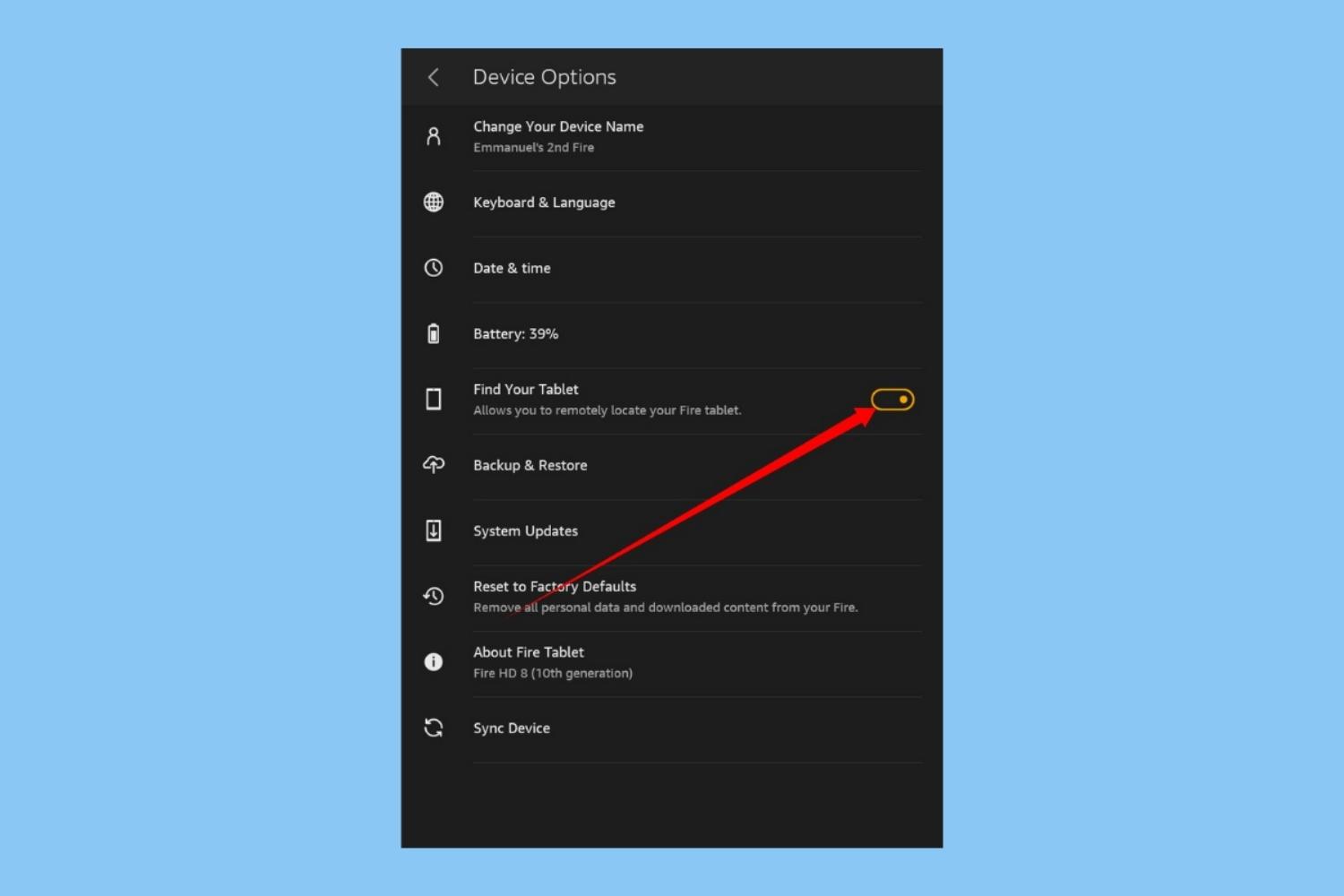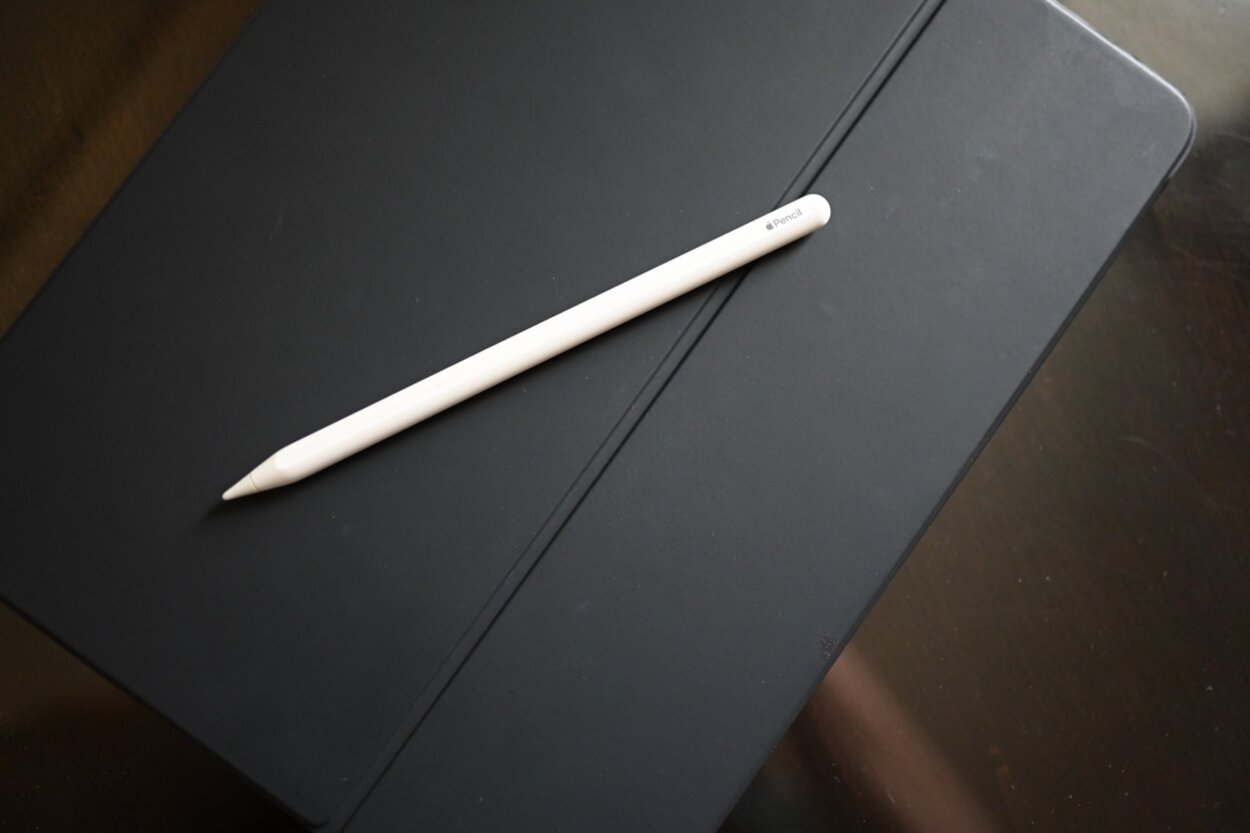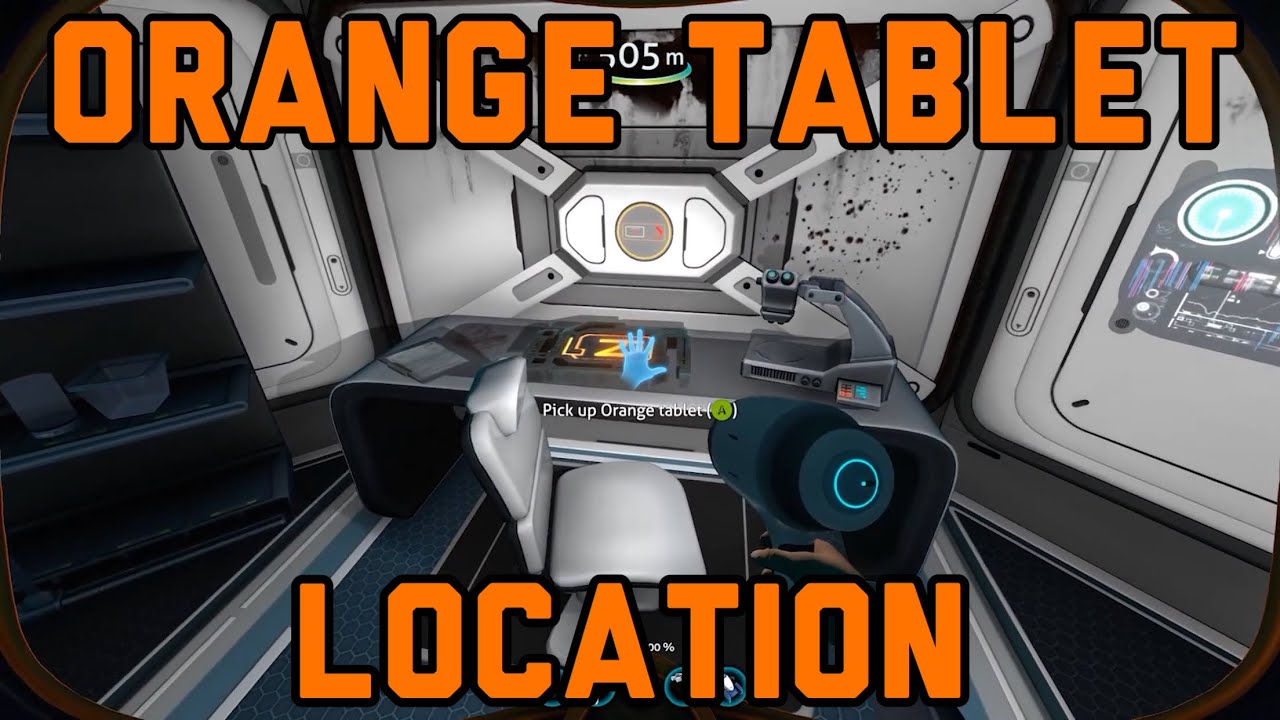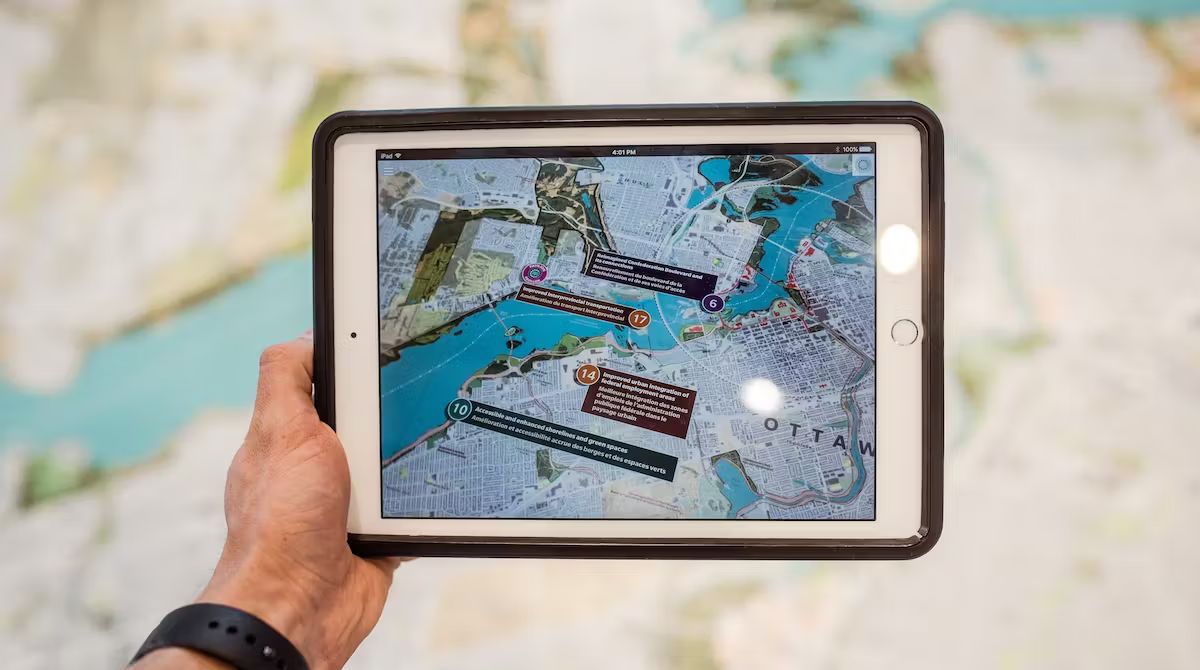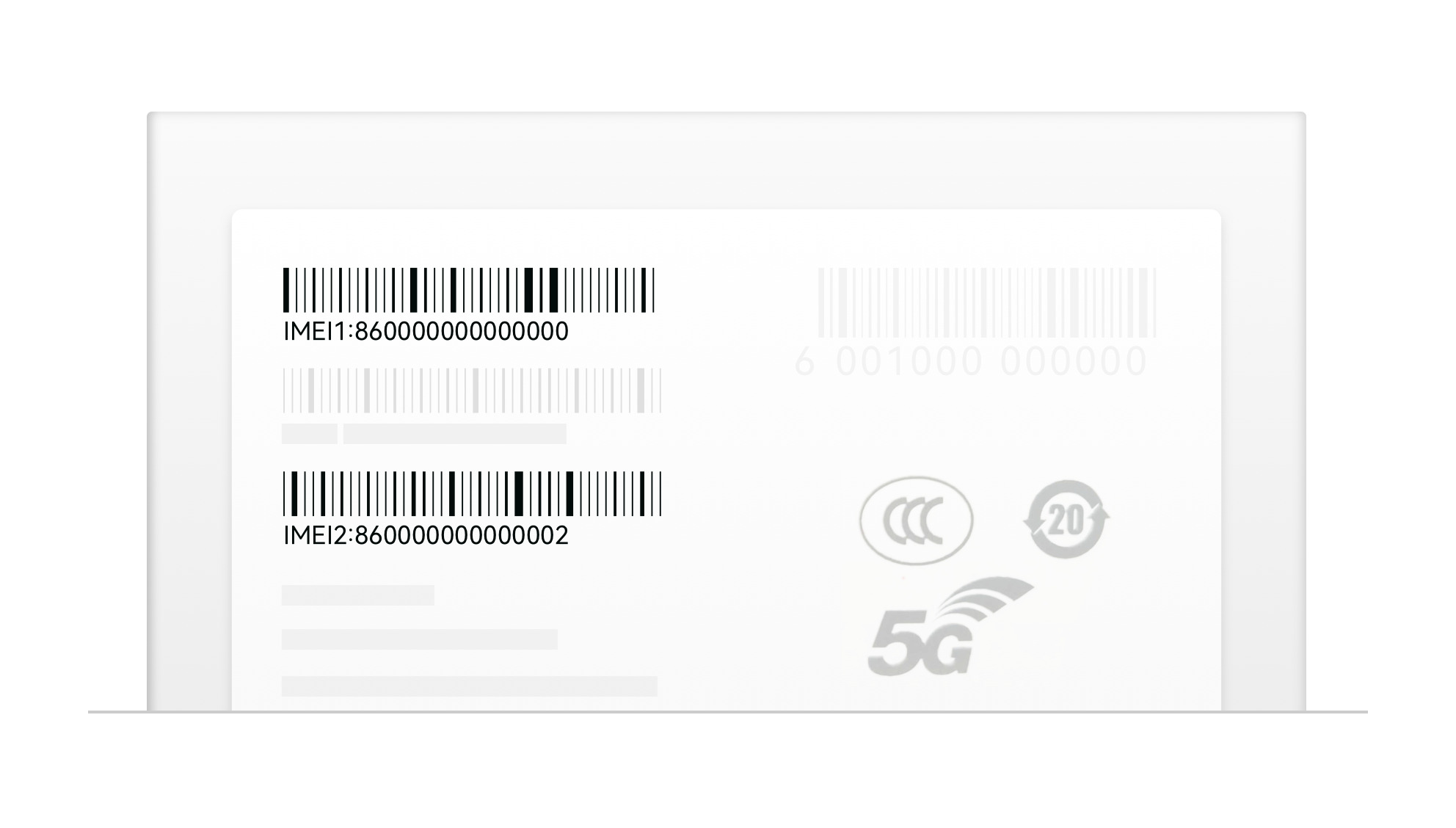Introduction
Welcome to our guide on how to find a lost tablet. Losing your tablet can be a stressful and frustrating experience, but don’t panic – there are steps you can take to increase your chances of recovering it. Whether you’ve misplaced your tablet at home or suspect it was stolen, this article will provide you with practical solutions to help locate it.
A lost tablet can cause more than just inconvenience. If you have important files, personal information, or sensitive data stored on your device, the thought of someone else gaining access to it can be worrisome. Therefore, it’s crucial to act quickly and follow the appropriate measures to swiftly locate and secure your tablet.
In this guide, we will explore various methods to help you find your missing tablet. From retracing your steps to utilizing technology like tracking apps and misplaced item finder gadgets, we have you covered. Additionally, we’ll discuss reaching out to your friends, family, and online communities for assistance, as well as reporting your tablet as lost.
While we cannot guarantee that you will be able to recover your tablet, following these steps will greatly improve your chances. It’s important to remain calm and methodical throughout the process. Now, let’s dive into the first step: retracing your steps.
Step 1: Retrace your steps
When you realize that your tablet is missing, the first step is to retrace your steps. This may seem obvious, but sometimes we overlook the most basic solution in a state of panic. Start by mentally retracing your movements and thinking about the last place you remember having your tablet.
Once you have identified the general area, thoroughly search that location. Check couch cushions, under furniture, and in pockets or bags that you may have used recently. Look for any signs of your tablet, such as charging cables or accessories, which may give you a clue as to where you left it.
If you are at home, consider visiting each room and conducting a systematic search. Look on tables, shelves, or any other surfaces where you typically place your tablet. Don’t forget to check common areas like the kitchen or bathroom, as you may have absentmindedly left it there.
If you still can’t find your tablet after a thorough search, expand your search area to places you may have visited during the day. Think about whether you took your tablet to work, school, or a friend’s house. Contact these locations and ask if anyone has seen or found your tablet.
It’s also worth checking your car, especially if you’re a frequent traveler. Your tablet may have slipped under a seat or gotten wedged between the cushions. Check under floor mats, in the glove compartment, and in the trunk to ensure it hasn’t been accidentally left behind.
Remember to keep a calm and systematic approach during your search. Panicking or rushing may cause you to overlook potential hiding spots. If, after retracing your steps, you still haven’t found your tablet, don’t worry. There are other methods you can try, which we will explore in the following steps.
Step 2: Use a tracking app
If you have installed a tracking app on your tablet, now is the time to put it to use. Tracking apps are designed to help you locate your device by using GPS or other tracking technologies.
Start by accessing the tracking app’s website or the corresponding mobile app on your smartphone. Log in to your account and locate the tracking feature. Depending on the app, you may be able to see the current location of your tablet on a map or track its movements in real-time.
If your tablet’s battery is still alive and it is connected to the internet, the tracking app should be able to provide you with its latest location information. Take note of the location and follow the directions to reach the device.
Some tracking apps also offer additional features, such as the ability to remotely lock or wipe your tablet in case of theft. If you suspect that your tablet has been stolen, consider using these security features to protect your personal data.
If you haven’t installed a tracking app on your tablet, don’t worry. There are still other steps you can take to increase your chances of finding it. However, for future reference, it’s a good idea to install a reliable tracking app on your device, as it can be a valuable tool in situations like this.
In the next step, we will explore an option that many people tend to overlook – calling your tablet. Stay tuned!
Step 3: Call your tablet
Believe it or not, sometimes calling your tablet can help you locate it. Most of us are accustomed to using our smartphones to make calls, but did you know that you can also call your tablet if it’s connected to a mobile network?
If you have a cellular-enabled tablet, try calling your tablet using your phone or another device. This can be especially helpful if you suspect that your tablet may be nearby but in a hidden or hard-to-reach location. Listen for any ringing or vibrations that could indicate its presence.
Keep in mind that for this method to work, your tablet must have an active SIM card and be connected to a mobile network. If your tablet is connected to Wi-Fi only, this method may not be effective.
If you hear your tablet ring or you locate it by following the sound, congratulations! You have successfully found your tablet. However, if your tablet is on silent mode or the battery is drained, this method may not yield any results.
If calling your tablet doesn’t lead to its discovery, don’t lose hope. Continue reading to explore the next step – checking common hiding spots.
Step 4: Check common hiding spots
When searching for a lost tablet, it’s essential to check common hiding spots where it may have been misplaced or overlooked. Even though everyone’s living spaces and routines differ, there are a few places that are worth investigating.
Firstly, thoroughly search your bag or backpack. It’s possible that your tablet may have slipped into a hidden pocket or fallen to the bottom. Inspect each compartment and pocket carefully, paying attention to any tucked-away spaces.
Next, check between couch cushions and under furniture. It’s not uncommon for a tablet to accidentally slide between cushions or get wedged under a sofa or chair. Carefully lift and shake cushions, using a flashlight if necessary, to spot any hidden items.
Don’t forget to look in your bedroom and workspace. Check your nightstand, desk drawers, and shelves. Sometimes, in the hustle and bustle of everyday life, we unknowingly place our tablets in unexpected spots. Take your time to thoroughly search these areas.
Kitchens and dining areas are also worth investigating. Check countertops, drawers, and cabinets. You might have absentmindedly placed your tablet near cooking utensils or in the pantry. Additionally, don’t overlook the possibility of it being hidden in a laundry basket or amongst folded clothes.
If you have children, be sure to search their play areas or toy boxes. Tablets have been known to end up among toys or under piles of stuffed animals. Involve your children in the search process, as they may have seen or played with the tablet.
Lastly, think about any other specific areas or rooms that you frequent regularly. Do you have a gym or a hobby space? Could your tablet be hiding in a gym bag or a toolbox?
Remember, the key to finding a lost tablet is patience and thoroughness. Go through each potential hiding spot diligently, and be sure to recheck areas that you may have already searched. If your tablet is not found in these common locations, it’s time to move on to the next step – asking friends and family for assistance.
Step 5: Ask friends and family
When all attempts to locate your lost tablet have been unsuccessful so far, it’s time to enlist the help of your friends and family. Reach out to your loved ones and ask if they have seen or come across your tablet recently.
Start by contacting the people who were with you or around you when you last remember having your tablet. They may have noticed something or remember seeing you with it. Provide them with details such as the color, size, and any distinguishing features of your tablet to aid in its identification.
Additionally, ask if anyone has borrowed or used your tablet without your knowledge. It’s possible that someone close to you may have unintentionally taken your tablet, thinking it belonged to them. By communicating openly, you can avoid misunderstandings and potentially track down your tablet.
If you are part of a household or share living spaces with others, involve them in the search as well. Inform your family members or roommates about the missing tablet and ask them to keep an eye out for it. It may have been moved or misplaced by someone else in the household.
Consider expanding your reach beyond your immediate circle of friends and family. Share a post or status on your social media profiles, explaining that you have lost your tablet and asking if anyone has seen it. Sometimes, acquaintances or friends of friends may be able to provide helpful information.
In addition to asking for assistance, you can also try leveraging the power of online communities. Join forums or online groups related to tablets or technology, and post about your missing device. The members of these communities often have valuable insights and may be able to offer guidance or suggestions.
Remember to express your gratitude to those who offer their help or provide leads. It’s important to stay positive and hopeful, as support from your network can greatly increase the chances of recovering your lost tablet.
If asking friends and family doesn’t yield any results, don’t worry. There are still more steps you can take in your quest to find your tablet. Let’s move on to the next step: utilizing a misplaced item finder gadget.
Step 6: Use a misplaced item finder gadget
When all conventional methods fail to locate your lost tablet, you can turn to modern technology for assistance. Misplaced item finder gadgets, such as Bluetooth trackers or smart tags, can be incredibly helpful in locating missing items, including your tablet.
Bluetooth trackers or smart tags are small, portable devices that you can attach to your belongings. They work by connecting to a companion app on your smartphone or tablet, allowing you to track the location of the tag. If your tablet is within the Bluetooth range of the tag, you can use the app to make the tag emit a sound, helping you pinpoint its location.
To use a misplaced item finder gadget, start by attaching the tracker or tag to a frequently used item, such as your keys, wallet, or bag. Make sure to follow the manufacturer’s instructions for pairing the gadget with your smartphone or tablet.
If your tablet goes missing or you suspect it may be nearby, open the companion app on your smartphone and activate the tracking feature. The app will display the approximate distance between your smartphone and the tag. Move around your space while keeping an eye on the app’s distance indicator to help you zero in on the tablet’s location.
Remember that Bluetooth has a limited range, typically around 30 feet. If your tablet is far beyond this range, the gadget may not be able to establish a connection. However, if your tablet is within range, it can be an effective tool for locating it within your immediate surroundings.
It’s worth noting that there are several brands and models of misplaced item finder gadgets available on the market, each with its own set of features and limitations. Do some research to find a tracker or tag that suits your needs and budget.
If using a misplaced item finder gadget doesn’t lead you to your tablet, don’t give up just yet. There are still more steps to explore in your search. Let’s move on to the next step – utilizing social media and online communities.
Step 7: Use social media and online communities
Social media and online communities can be powerful tools in the search for a lost tablet. The vast reach and interconnectedness of these platforms can help spread the word about your missing device and increase the chances of someone spotting it or providing valuable information.
Start by creating a post on your social media profiles, such as Facebook, Instagram, or Twitter, explaining that your tablet is lost and providing relevant details about it. Include a description of the tablet, any distinguishing features, and the location where it went missing. Ask your friends and followers to share the post to increase its visibility.
Additionally, consider joining local community groups or neighborhood forums on social media. These groups often have members who are invested in supporting their community and may be willing to keep an eye out for your lost tablet.
If there are specific online communities or forums dedicated to tablets or technology enthusiasts, consider posting about your missing device there as well. These communities often have active members who are knowledgeable about various tech-related topics and may have suggestions or insights on how to locate your tablet.
When posting on these platforms, be sure to remain vigilant and cautious about sharing sensitive information. Avoid posting personal details or any information that could potentially compromise your privacy or device security.
Monitor the comments and messages you receive on your posts and engage with anyone who provides helpful leads or information. Express your gratitude to those who share your post or offer their support. Their assistance and engagement can significantly increase the chances of your lost tablet being found.
As you utilize social media and online communities, keep in mind that not everyone who sees your post will have good intentions. Be wary of any suspicious messages or requests for personal information. Focus on connecting with genuine individuals who genuinely want to help.
If using social media and online communities doesn’t yield any results, don’t lose hope. There are still more steps you can take in your pursuit of finding your tablet. Let’s move on to the next step – checking local lost and found listings.
Step 8: Check local lost and found listings
When searching for a lost tablet, it’s important not to overlook the power of local lost and found listings. Many cities and communities have dedicated lost and found services or websites where people can report lost items and others can search for found items.
Start by checking if your local government or municipality has an official lost and found service. They may have a physical office or an online platform where you can report and search for lost items. Provide them with a description of your tablet and any relevant details, such as the location and time it went missing.
In addition to government-run services, you can also explore local community platforms or websites where people in your area post about found items. These platforms vary by location but could include community bulletin boards, neighborhood websites, or social media groups dedicated to lost and found items.
When searching these listings, look for descriptions or photos that match your tablet’s appearance. Reach out to the individuals who have found items similar to your tablet and ask for further details. Keep in mind that people who find lost items may not always immediately post about them, so continue checking the listings periodically.
Don’t forget to check with local businesses, public transportation services, and establishments that you visited recently. They may have a lost and found department where your tablet could have been turned in. Call or visit these places to inquire about any tablets that have been handed in.
If you come across any potential leads or matches, be prepared to provide proof of ownership when claiming your tablet. This could include the tablet’s serial number, purchase receipt, or any unique identifying information that only the true owner would know.
Remember, lost and found listings are essential resources in the search for a lost tablet. Checking these listings can help you connect with individuals who may have found your tablet and increase your chances of being reunited with it.
If checking local lost and found listings doesn’t lead to the recovery of your tablet, don’t lose hope. There are still a few more steps to explore. Let’s move on to the next step: reporting your tablet as lost.
Step 9: Report your tablet as lost
Reporting your tablet as lost is an important step in the process of recovering it. By officially registering it as a lost item, you increase the chances of someone finding and returning it to you.
Start by contacting your local police department or the non-emergency line to report your tablet as lost. Provide them with a detailed description of your tablet, including its make, model, color, and any distinctive features. They may ask for additional information, such as the location and time it went missing.
When making the report, be sure to obtain a copy of the lost item report or case number. This can be useful for insurance claims or if you discover any suspicious activity related to your tablet later on.
In addition to local law enforcement, consider reporting your tablet as lost to the manufacturer or the retailer from whom you purchased it. They may have procedures or systems in place for tracking and recovering lost devices. Provide them with the necessary details and any relevant serial numbers or purchase information.
It’s also a good idea to update your tablet’s status on any relevant online platforms or accounts you have with the device. For example, if you use an Apple iPad, report it as lost through the Find My app or the iCloud website. This can help track its location if it comes online and also prevent unauthorized access or use.
Lastly, you can utilize online lost and found databases or websites specifically designed for reporting and searching for lost items. These platforms allow you to create a detailed listing for your lost tablet, including photos, description, and contact information. Individuals who find your tablet and come across the listing may reach out to you for its return.
By reporting your tablet as lost, you are increasing the visibility of the situation and notifying relevant authorities and organizations. This increases the chances of someone recognizing your tablet and taking the necessary steps to return it to you.
If reporting your tablet as lost doesn’t immediately yield results, don’t lose hope. There is one more step to explore. Let’s move on to the final step: taking preventive measures for the future.
Step 10: Take preventive measures for the future
While it’s always important to take action when your tablet is lost, it’s equally crucial to implement preventive measures to minimize the chances of it happening again in the future. Here are some tips to help you safeguard your tablet from being lost or misplaced:
1. Enable device tracking: Make sure to activate the tracking feature on your tablet, such as Find My Device for Android or Find My iPad/iPhone for Apple devices. These built-in features help you locate your device in case it gets lost or stolen.
2. Use a passcode or biometric authentication: Protect your tablet with a strong passcode or utilize biometric authentication, such as fingerprint or face recognition. This adds an extra layer of security and ensures that only you can access the device.
3. Keep a backup of your data: Regularly back up your tablet’s contents to an external hard drive, cloud storage, or your computer. That way, even if your tablet is lost or damaged, you won’t lose important files and data.
4. Use a tablet case or sleeve: Invest in a protective case or sleeve that fits your tablet. Not only does this guard against scratches and damage, but it can also make it easier to spot your tablet in crowded or cluttered environments.
5. Keep track of your tablet’s location: Develop a habit of always placing your tablet in a designated spot when not in use. This could be a drawer, a specific pocket in your bag, or a charging station. By consistently returning your tablet to the same place, you reduce the chances of misplacing it.
6. Consider tablet insurance: Check with your insurance provider to see if you can add your tablet to your existing policy or purchase a separate insurance plan. This can provide financial protection in case of loss, theft, or damage to your device.
7. Be mindful in public spaces: When using your tablet in public, always keep an eye on it and be aware of your surroundings. Avoid leaving it unattended or in easily accessible areas, which can make it an attractive target for theft.
By proactively implementing these preventive measures, you can significantly reduce the likelihood of losing your tablet in the future. However, accidents can still happen, so remember to stay calm and follow the steps outlined in this guide should you find yourself in the unfortunate situation of a lost tablet.
Conclusion
Losing a tablet can be a frustrating experience, but with the right approach, you can increase your chances of finding it. Remember to stay calm and follow the steps outlined in this guide to help locate your lost tablet.
Start by retracing your steps and thoroughly searching areas where you might have misplaced your tablet. Utilize tracking apps or call your tablet to narrow down its location. Check common hiding spots, ask friends and family for assistance, and consider using misplaced item finder gadgets.
Engage with social media and online communities, and be sure to check local lost and found listings. Report your tablet as lost to authorities and take preventive measures for the future to minimize the risk of losing it again.
Although we cannot guarantee that you will recover your tablet, by taking these steps, you are maximizing your chances of finding it. Remember to remain patient, persistent, and proactive throughout the process.
If all else fails, it may be time to consider investing in a new tablet or exploring options for data recovery, especially if you had important files or sensitive information stored on the lost device.
We hope that this guide has provided you with valuable insights and practical solutions to finding your lost tablet. Stay positive and continue searching, and we wish you the best of luck in recovering your precious device!







